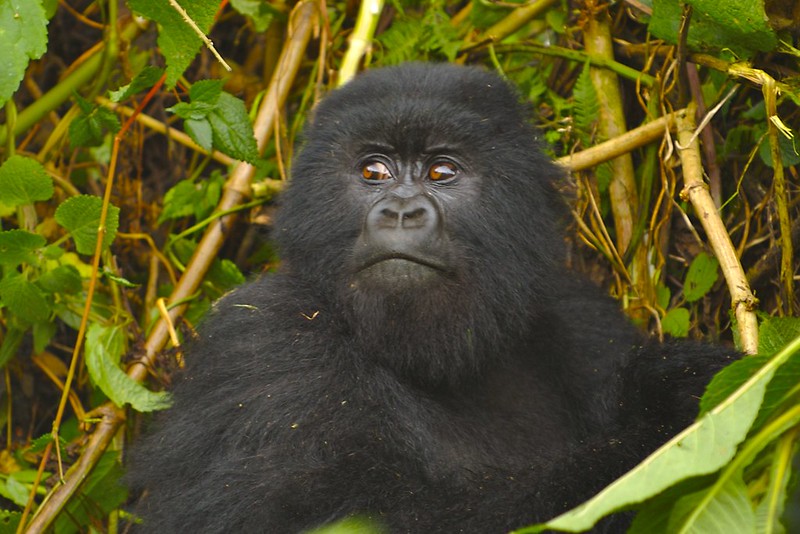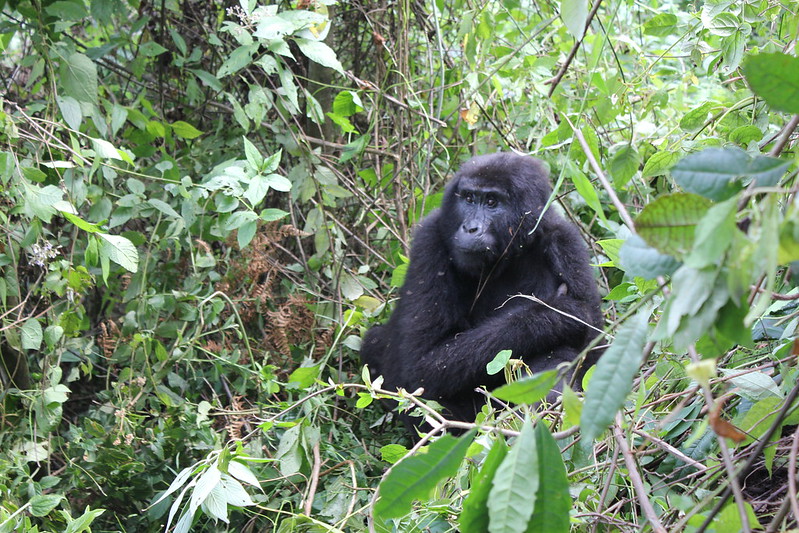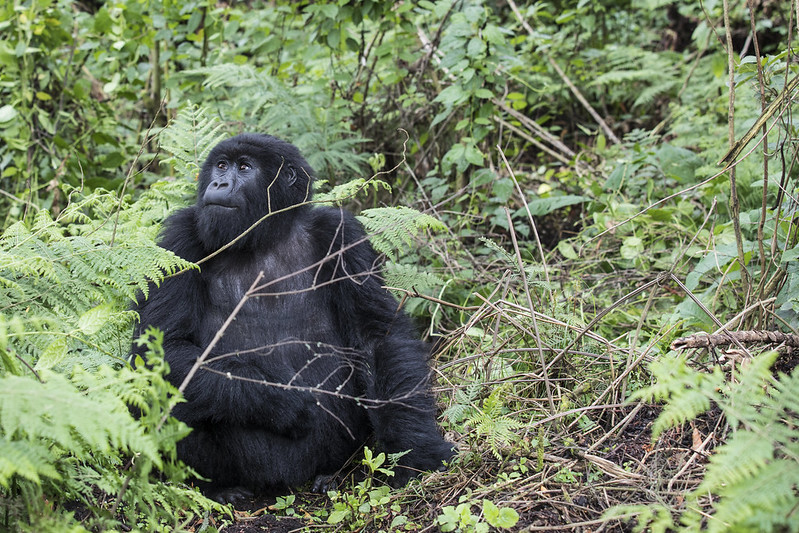
Where to go for mountain gorilla trekking in Africa
Where to go for mountain gorilla trekking in Africa.
Where in Africa can one go mountain gorilla trekking? with more than 1,000 mountain gorillas remaining in the world. One of the smartest animals on the planet is the mountain gorilla. Because they resemble humans in appearance and self-organization, encountering these wonderful, kind monkeys is regarded as one of the most exciting experiences in adventure. There are four different kinds of gorillas in Africa: mountain gorillas, cross-river gorillas, western lowland gorillas, and eastern lowland gorillas, also known as Gauer’s gorillas.
Only three countries in central Africa—Uganda, Rwanda, and the Democratic Republic of the Congo—are home to mountain gorillas. Of these, Uganda is home to the greatest number, and two of its national parks—the Mgahinga Gorilla National Park and the Bwindi Impenetrable Forest National Park—are home to these amazing primates. These intriguing caverns are located in the Volcanoes National Park in Rwanda and the Virunga National Park in the Democratic Republic of the Congo.
The average silverback gorilla may weigh up to 180 kg, or about 30 stone, and stand 170 cm tall on all fours, making them one of the largest and strongest primates still in existence. On the other hand, female mountain gorillas can reach a height of 150 cm and weigh 90 kg. Mountain gorillas consume primarily plants for around 25% of the day.
Although leaves, shoots, and stems make up around 85% of a gorilla’s diet, they can also consume ants, snails, larvae, and even decaying timber, roots, and bark. With one dominant male and multiple females, the majority of mountain gorillas reside in stable family groupings of ten or more.
The group’s males and females take care of their babies by playing, caressing, and carrying them. Groups of mountain gorillas sleep together at night in ground-based nests or in trees they have constructed out of leaves. In order to be warm and safe, infants will share their mothers’ nests.
Degradation of their environment is the primary threat to mountain gorillas. Deforestation results from competition for scarce natural resources and the increasing conversion of land for agriculture brought on by the region’s population growth.
People enter mountain gorilla forests to gather firewood and water because they have no other option, endangering the gorillas’ health and well-being. Additionally, people may unintentionally hurt great primates by setting snares meant for bushmeat. Gorillas are not confined to their forests. In order to consume crops like maize and bananas, they travel onto farmland, which may lead to confrontation with those who must earn a living.
Africa’s top destinations for mountain gorilla trekking include Uganda and Rwanda.
Ugandan gorilla trekking provides an amazing chance to see these amazing animals in their natural environment. There are two primary locations in Uganda where the fascinating and captivating primates can be found: Bwindi Impermeable Forest National Park and Mgahinga Gorilla National Park.
Bwindi Impenetrable National Park is renowned for having a large population of mountain gorillas, with over 25 habituated gorilla families, including the Mubare, Habinyanja, Rushegura, Rushaga Sector Groups, Bweza, Nshongi, Nkuringo, Oruzogo, and Bitukura families. On the other hand, Mgahinga National Park provides fantastic gorilla trekking opportunities, but has a smaller gorilla population that is concentrated in one gorilla family, the Nyakagezi Group.
Where in Africa can I go mountain gorilla trekking?
The Volcanoes National Park, which includes five of the eight volcanoes in the Virunga Mountains—Sabyinyo, Gahinga, Muhabura, Bisoke, and Karisimbi—and spans 160 square kilometers of rainforest, is the only place in Rwanda where mountain gorilla trekking is permitted.
Africa’s top destinations for mountain gorilla trekking are the Democratic Republic of the Congo.
In the Democratic Republic of the Congo, trekking for mountain gorillas is limited to the Virunga National Park. The second-largest tropical rainforest in the world, Virunga National Park is known as the “park of fire and ice” due to its diverse population. Over 300 of the 1000 mountain gorillas in the wild live in the park, which is also home to the third largest mountain gorilla in the world.
These individuals are divided among eight habituated mountain gorilla families, including the Kabirizi, Nyakamwe, Lulengo, Mapuwa, Humba, Bageni, and Rugendo families. Surprisingly, the park is home to the largest lake in the world, Crater Lake, which is located atop Mount Nyiragongo. It is also home to two of the eight active volcanoes in the Virunga conservation region. Nonetheless, Volcano National Park in Rwanda is a suitable location for gorilla trekking safaris.
Experiences trekking with gorillas
Magical discoveries can be found when trekking with gorillas in both mountain gorilla destinations. Since national parks are surrounded by rich rainforest flora and follow the same set of guidelines, norms, and expectations as gorilla trekking safaris, gorilla trekking entails going into the jungles of the tropical rainforest in search of these amazing mountain gorillas.
All gorilla trekking safaris start in the morning with a quick rundown of rules and instructions, along with expectations for the time spent in the jungle. Only those who are at least 15 years old are permitted to trek with these amazing animals; only a maximum of 8 people may be assigned to each habituated gorilla group. In both national parks, gorilla trekking is going through the tropical rainforest jungles in search of mountain gorillas in their various groups.
Depending on where the gorillas have spent the night, the trek takes four to six hours. During the walk, visitors will also have the opportunity to interact with and be captivated by various wild animals. Visitors are always given an hour to spend with the gorillas in their habituated family while keeping their eyes intact. During this time, they can observe how these amazing animals perform their daily tasks in the wild, including playing, feeding, and nursing.
How much does it cost in Rwanda, Uganda, and the Congo?
The cost of a gorilla trekking permit in Uganda is 300,000 UGX for East African nationals, $700 for locals, and $800 for foreign non-residents each trek. This gives you the opportunity to see the mountain gorillas in their natural environment for an hour.
The cost of a gorilla trekking permit in Rwanda is 200,000 UGX for East African nationals, $600 for locals, and $1,500 for foreign non-residents each trek. This gives you the opportunity to spend an hour in Volcanoes National Park interacting with mountain gorillas in their natural environment.
In the Congo, a gorilla trekking permit costs $400 per person for foreign non-residents, $200 for residents of East Africa, and $20 for Congolese nationals.


